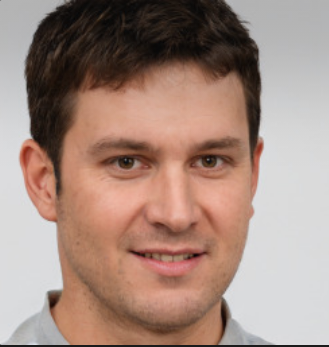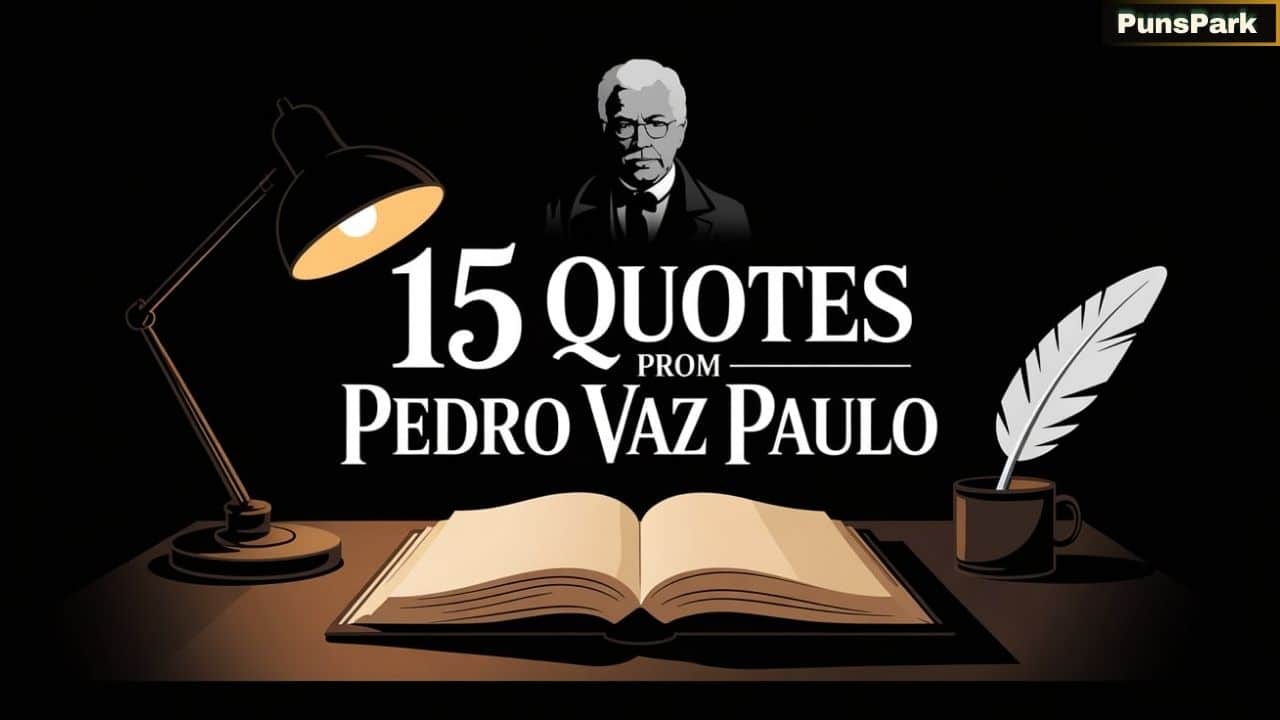Pedro Vaz Paulo: In a world where artistic expression continuously evolves, few voices have resonated as deeply as Pedro Vaz Paulo. His philosophies and insights have shaped the landscape of contemporary art in ways both subtle and revolutionary.
This comprehensive exploration examines fifteen of his most powerful quotes and their enduring impact on artists, critics, and audiences worldwide.
The Raw Truth: Authenticity in Artistic Expression
“Art that hides nothing sees everything” – Pedro Vaz Paulo
This deceptively simple statement encapsulates Pedro Vaz Paulo’s fundamental approach to artistic theory.
Unlike many of his contemporaries who embraced obfuscation and complexity, Vaz Paulo advocated for brutal honesty in creative expression.
This philosophy has profoundly influenced the development of authenticity movements in contemporary art, particularly among digital artists seeking to cut through technological veneer to reveal deeper truths.
Brazilian installation artist Marco Oliveira, directly inspired by this quote, created his renowned “Transparent Spaces” series where viewers must confront uncomfortable realities without artistic filter.
“When I encountered Vaz Paulo’s words about hiding nothing, I realized I had been creating beautiful lies,” Oliveira explained in a 2019 interview.
The impact of this authenticity-focused approach extends beyond aesthetics it has transformed how artists approach subject matter.
We’ve witnessed a significant shift away from purely decorative art toward works that confront social, political, and environmental issues with unflinching directness.
Artistic authenticity elements inspired by Vaz Paulo:
- Raw material usage without concealment
- Explicit acknowledgment of process and mistakes
- Unfiltered emotional expression
- Documentation of the artistic journey
- Rejection of market-driven aesthetic choices
The Silent Revolution: Minimalism as Rebellion
“When I strip away color, what remains isn’t absence but essence” – Pedro Vaz Paulo
“The blank canvas screams louder than any painting” – Pedro Vaz Paulo
In an era dominated by increasingly complex visual stimulation, Pedro Vaz Paulo’s embrace of simplicity represented a radical departure.
These two quotes fundamentally challenged the maximalist trends that dominated the early 2000s art world.
His philosophy of reduction wasn’t about simplification but rather intensification through removal.
The São Paulo minimalism movement that emerged in Vaz Paulo’s wake demonstrated how this approach could be both politically charged and emotionally resonant.
Artists like Clara Mendez, whose monochromatic installations have been featured in the MoMA, directly credit Vaz Paulo’s philosophy.
“His idea that the blank canvas screams changed everything for me,” Mendez stated at her 2022 retrospective. “I stopped trying to fill space and started listening to it instead.”
Cross-medium application of Vaz Paulo’s minimalist philosophy:
| Medium | Traditional Approach | Vaz Paulo-Inspired Approach |
|---|---|---|
| Painting | Color-rich compositions | Monochromatic focus on form |
| Sculpture | Complex, detailed forms | Essential shapes with emotional resonance |
| Digital Art | Technologically complex | Deliberately limited technological intervention |
| Photography | Heavily edited, stylized | Raw, unmanipulated imagery |
| Installation | Immersive complexity | Single-element focus with spatial awareness |
Breaking Boundaries: Cross-Cultural Dialogues
Pedro Vaz Paulo’s approach to cultural diversity fundamentally reshaped how artists conceptualize cultural identity in their work.
His words have become a manifesto for artists working across traditional boundaries.
“My art speaks Portuguese, dreams in Japanese, and argues in French” – Pedro Vaz Paulo
“Cultural borders exist only in galleries, never in creation” – Pedro Vaz Paulo
These statements reflect Vaz Paulo’s rejection of cultural silos in artistic expression. His work deliberately blended influences from his Brazilian heritage with Japanese minimalist philosophy and European conceptual frameworks.
This cross-cultural approach has inspired numerous international collaborations.
The “Borderless Canvas” initiative, launched in 2018 and directly inspired by these quotes, brought together artists from 24 countries to create works that deliberately transcended national and cultural boundaries.
The resulting exhibition traveled to 15 cities worldwide, demonstrating the global resonance of Vaz Paulo’s philosophy.
Cultural fusion techniques promoted by Vaz Paulo:
- Integration of multiple language systems within single works
- Deliberate juxtaposition of culturally specific symbols
- Collaborative creation across geographic boundaries
- Recontextualization of traditional techniques
- Challenging audience expectations of cultural authenticity
Artist Yoko Tanaka credits Vaz Paulo’s philosophy for giving her permission to explore her complex cultural identity.
Her award-winning “Divided Echo” series explicitly references his quote about cultural borders while integrating her Japanese-Brazilian heritage into works that defy categorization.
The Market vs. The Message
“Sell your art if you must, never your vision” – Pedro Vaz Paulo
“The true collector buys the question, not the answer” – Pedro Vaz Paulo
In an era of skyrocketing art prices and increasing commercialization, Pedro Vaz Paulo’s stance on the art market represented a powerful counternarrative.
These quotes challenged both artists and collectors to reconsider their relationship with artistic creation and acquisition.
Maria Gonzalez, director of the influential Novo Mundo Gallery in São Paulo, completely restructured her business model after encountering these quotes.
“We stopped marketing artists based on investment potential and started focusing on the questions their work posed,” she explained.
“Surprisingly, this attracted more serious collectors willing to pay premium prices for work with intellectual integrity.”
This philosophy has directly influenced how many contemporary galleries approach representation, with an increasing focus on artistic vision rather than market trends.
Several prominent artists, including Chen Wei and Sophia Kalambakis, have explicitly cited these quotes when turning down lucrative commissions that would have compromised their artistic direction.
Vaz Paulo’s impact on art market practices:
- Rise of galleries focusing on artistic process documentation
- Growth of collector education programs about artistic philosophy
- Development of alternative funding models for uncommercial art
- Reconsideration of how artists price their work
- More transparent discussion about artistic compromises
Technical Innovation Through Philosophical Foundation
Pedro Vaz Paulo’s approach to technology in art has provided a crucial framework for artists navigating rapidly evolving tools and techniques.
“New tools, ancient questions” – Pedro Vaz Paulo
“The medium changes, the struggle remains” – Pedro Vaz Paulo
These insights have proven particularly influential among digital art pioneers seeking to balance technological innovation with meaningful expression.
Rather than fetishizing technology itself, Vaz Paulo positioned it as merely the latest vehicle for humanity’s eternal artistic questions.
This perspective has been especially relevant as NFTs and AI-generated art have disrupted traditional artistic creation models.
Many leading digital artists explicitly reference Vaz Paulo when discussing how they approach technological tools.
Technology applications influenced by Vaz Paulo’s philosophy:
- AI art that deliberately maintains human emotional elements
- VR experiences that focus on timeless human conditions
- Blockchain art that questions ownership rather than merely utilizing the technology
- Generative art that incorporates traditional artistic principles
- Digital works that intentionally reference analog predecessors
“When I started working with generative algorithms,” explains renowned digital artist Fernando Marquez,
“I kept Vaz Paulo’s quote about new tools and ancient questions taped to my monitor.
It reminded me that regardless of the technology, I needed to stay focused on the fundamental human emotions I wanted to explore.”
The Artist as Social Critic
Pedro Vaz Paulo’s perspective on the artist’s responsibility to engage with social issues has reshaped how many creators approach political content.
“Art that comforts the comfortable has failed” – Pedro Vaz Paulo
“Beauty without truth is decoration” – Pedro Vaz Paulo
These provocative statements positioned art as an inherently political act and challenged artists to confront uncomfortable realities. This philosophy has directly influenced several major protest art movements, particularly in Latin America.
The “Uncomfortable Truths” collective, founded in 2017 in Mexico City, explicitly cites these quotes in their manifesto.
Their installations addressing immigration, climate change, and economic inequality have generated significant controversy and government pushback precisely the discomfort Vaz Paulo advocated for.
Social critique techniques inspired by Vaz Paulo:
- Juxtaposition of beauty with disturbing content
- Incorporation of real news footage into artistic contexts
- Creation of seemingly pleasant works that reveal darker meanings upon closer examination
- Deliberate placement of politically charged art in unexpected public spaces
- Collaboration with marginalized communities to amplify unheard voices
“What I learned from Vaz Paulo,” explained activist artist Carmen Rodriguez, “was that my art didn’t need to explicitly show political imagery to be political.
The act of challenging comfort through beauty could be more powerful than direct protest imagery.”
Mentorship and Legacy
Pedro Vaz Paulo’s approach to teaching and mentorship has reshaped art education globally.
“Teach technique, but learn vision” – Pedro Vaz Paulo
“My greatest work walks and talks in studios I’ve never visited” – Pedro Vaz Paulo
These statements reflect Vaz Paulo’s belief that true artistic education goes beyond technical skill to nurture each student’s unique perspective.
His teaching methodology emphasized asking questions rather than providing answers, challenging students to discover their authentic voice.
Three prominent artists who studied under Vaz Paulo demonstrate the effectiveness of this approach:
Isabel Mendes – Initially struggled with technical precision but flourished when Vaz Paulo encouraged her to develop her distinctive expressionist style. Now a leading figure in Brazilian contemporary painting whose work sells for six figures.
Tomas Ferreira – Arrived with exceptional technical skills but no personal vision. Under Vaz Paulo’s mentorship, developed his groundbreaking “Temporal Collapse” series combining photography and sculpture.
Jin Park – International student who credits Vaz Paulo with helping him integrate his Korean heritage with contemporary Western techniques, resulting in his acclaimed “Divided Harmony” installations.
“He never told me what to paint,” Park explained. “Instead, he asked questions that forced me to articulate why I was painting at all. That changed everything.”
The Future Through the Past
“Tomorrow’s art is born from yesterday’s mistakes” – Pedro Vaz Paulo
“Innovation is memory with courage” – Pedro Vaz Paulo
Pedro Vaz Paulo’s perspective on artistic innovation as a dialogue with tradition rather than a rejection of it has been particularly influential among experimental contemporary movements.
Rather than pursuing novelty for its own sake, he advocated for thoughtful evolution that acknowledges its foundations.
The “Historical Futures” exhibition series, launched in 2021 at the Barcelona Contemporary Art Museum, explicitly referenced these quotes while showcasing works that reinterpreted historical techniques through contemporary perspectives.
Approaches to innovation inspired by Vaz Paulo:
- Deliberate study and deconstruction of historical techniques
- Integration of traditional craft methods with new technologies
- Reexamination of abandoned artistic approaches
- Cross-disciplinary application of established techniques
- Honest acknowledgment of artistic influences
Contemporary artist Lin Chen, whose work combines Song Dynasty painting techniques with digital manipulation, credits Vaz Paulo’s philosophy with giving her permission to embrace rather than reject her classical training.
“I was trying to run from history,” she explained. “Vaz Paulo taught me to run with it instead.”
Practical Application: Creating in the Spirit of Vaz Paulo
Pedro Vaz Paulo’s philosophical framework offers practical approaches for artists across disciplines:
Workshop approaches inspired by Vaz Paulo’s quotes:
- Authenticity Exercises: Creating work without audience consideration, then analyzing how audience awareness changes the process
- Simplification Challenges: Repeatedly reducing compositions to identify essential elements
- Cross-Cultural Dialogue: Collaborative projects requiring cultural exchange and translation
- Commercial Questioning: Analyzing how market considerations influence creative decisions
- Technological Foundations: Using new technologies to address traditional artistic questions
These approaches have been formalized in several prominent art programs, including the Vaz Paulo Institute in São Paulo, which offers workshops specifically designed around his quotes and methodologies.
“What makes these exercises powerful,” explains Institute director Luisa Carvalho, “is that they don’t teach a style but rather a way of thinking about creativity itself.”
Critical Reception and Controversies
While Pedro Vaz Paulo’s influence is undeniable, his ideas have not been without critics.
Traditional art historians have questioned his rejection of technical virtuosity, while some contemporary theorists argue his approach to cultural borrowing can verge on appropriation.
Art critic Roberto Vásquez famously described Vaz Paulo’s philosophy as “profound-sounding platitudes that collapse under scrutiny,” arguing that his quotes offer emotional appeal without intellectual rigor.
Nonetheless, these controversies themselves have generated significant artistic exploration.
The “Response” exhibition series, featuring works explicitly created to challenge Vaz Paulo’s ideas, has toured major museums since 2019.
Key debates surrounding Vaz Paulo’s philosophy:
- Whether authenticity is possible in commercial art contexts
- If minimalism represents simplification or sophistication
- The ethics of cross-cultural artistic borrowing
- Where technical mastery fits in contemporary art practice
- How political responsibility balances with artistic freedom
FAQs
Who is Pedro Vaz Paulo and what impact has he had on contemporary art?
Pedro Vaz Paulo is a renowned artist known for his innovative approach to contemporary art. His work emphasizes creativity, emotion, and social reflection. Through his philosophy, he has influenced many modern artists to explore emotional expression, minimalism, and cross-cultural perspectives, redefining how art communicates with audiences.
How did Pedro Vaz Paulo philosophy shape the role of collaboration in modern art?
Pedro Vaz Paulo believed that “Art grows when minds meet and ideas collide.” His vision of collaboration in art has encouraged contemporary artists to work together, blending different artistic mediums like painting, music, and technology. His influence is seen in multidisciplinary projects that challenge traditional boundaries and promote innovation.
What makes Pedro Vaz Paulo approach to simplicity in art so revolutionary?
Pedro Vaz Paulo’s philosophy on simplicity challenges the conventional idea of minimalism. He stated that “Simplicity in art is not the absence of complexity, but the mastery of it.” This approach inspires artists to create works that evoke deep emotional responses through understated yet powerful visual narratives.
How has Pedro Vaz Paulo work addressed social and political issues in art?
Pedro Vaz Paulo viewed art as a mirror to society, stating that “An artist holds a mirror to the world, revealing truths often left unseen.” His work has inspired contemporary artists to tackle social, political, and environmental problems through their art, creating pieces that spark conversation and social reflection.
What role does Pedro Vaz Paulo play in the development of digital and technology-driven art?
Pedro Vaz Paulo’s influence extends into the digital realm, where he encouraged artists to embrace technology. His ideas, particularly about curiosity and exploration, have shaped movements like abstract expressionism and digital art, helping artists explore new media and redefine artistic convention.
How has Pedro Vaz Paulo belief in cultural diversity influenced modern art?
Pedro Vaz Paulo’s quote, “Every culture brings its own colors to the canvas of humanity,” highlights his belief in the importance of cultural diversity in art. His perspective has motivated contemporary artists to celebrate cultural roots and incorporate cross-cultural elements into their works, making art more global and inclusive.
Conclusion
The fifteen quotes explored in this article represent more than just Pedro Vaz Paulo’s personal philosophy they have become foundational principles reshaping contemporary art discourse and practice.
From challenging commercial imperatives to redefining cultural boundaries, from championing authenticity to reimagining artistic education, his words continue to inspire and provoke.
As contemporary art continues to evolve in an increasingly complex global landscape, Vaz Paulo’s insights offer both guidance and challenge.
His emphasis on authenticity, simplicity, cultural dialogue, and social responsibility provides a crucial framework for navigating the technological and social changes transforming artistic creation.
Perhaps most significantly, Vaz Paulo’s quotes transcend art theory to offer broader cultural insights about human existence, creativity, and communication in our fragmented modern world.
In an era of increasing specialization and siloed knowledge, his holistic vision of art as integrated with life itself offers a powerful counternarrative.
The true testament to Pedro Vaz Paulo’s impact lies not just in galleries and museums but in studios worldwide where artists contemplate his words while making creative decisions that will shape the future of art itself.
Further Resources
For those wishing to deepen their understanding of Pedro Vaz Paulo’s impact:
- “The Vaz Paulo Effect: Transformation in Contemporary Art” – Comprehensive scholarly examination published by MIT Press
- Annual “Vaz Paulo Dialogues” symposium at the São Paulo Museum of Modern Art
- Online archive of interviews and lectures at the Vaz Paulo Institute digital collection
- “Creating in Question” – Documentary exploring his teaching methodology
- r/VazPauloArt – Active Reddit community discussing applications of his philosophy
Read more knowledgeable blogs on Puns Park

Philipp Engel is a master of wit and wordplay, dedicated to crafting pun-filled content that brings smiles and laughter to readers. With a knack for turning ordinary phrases into extraordinary humor, Philipp shares clever pun guides to brighten your day and sharpen your sense of humor.







